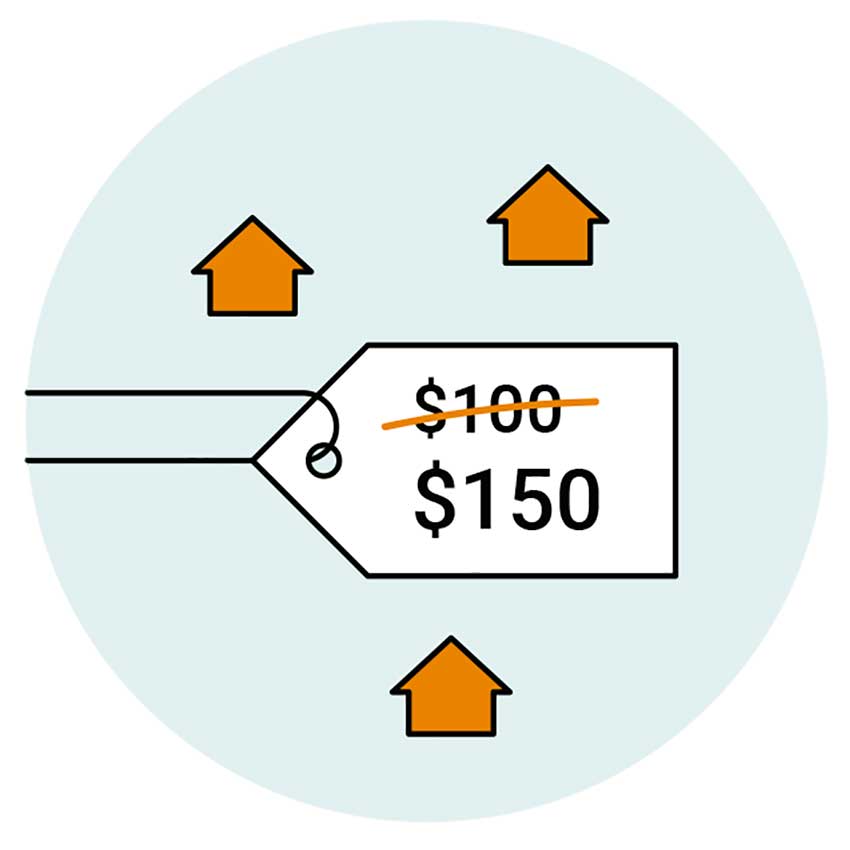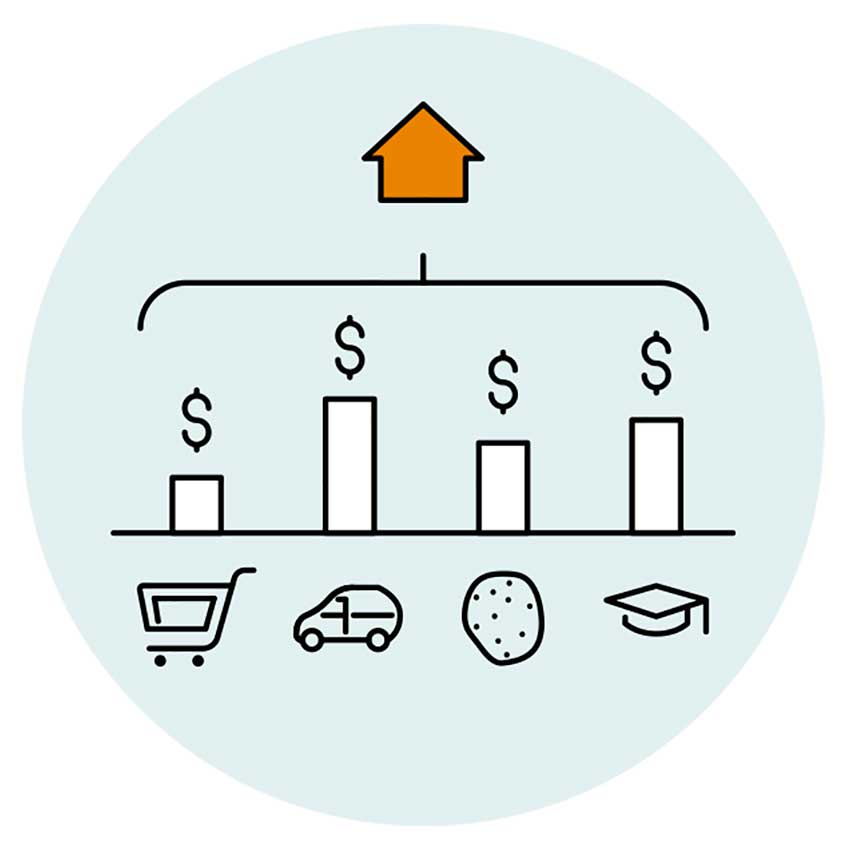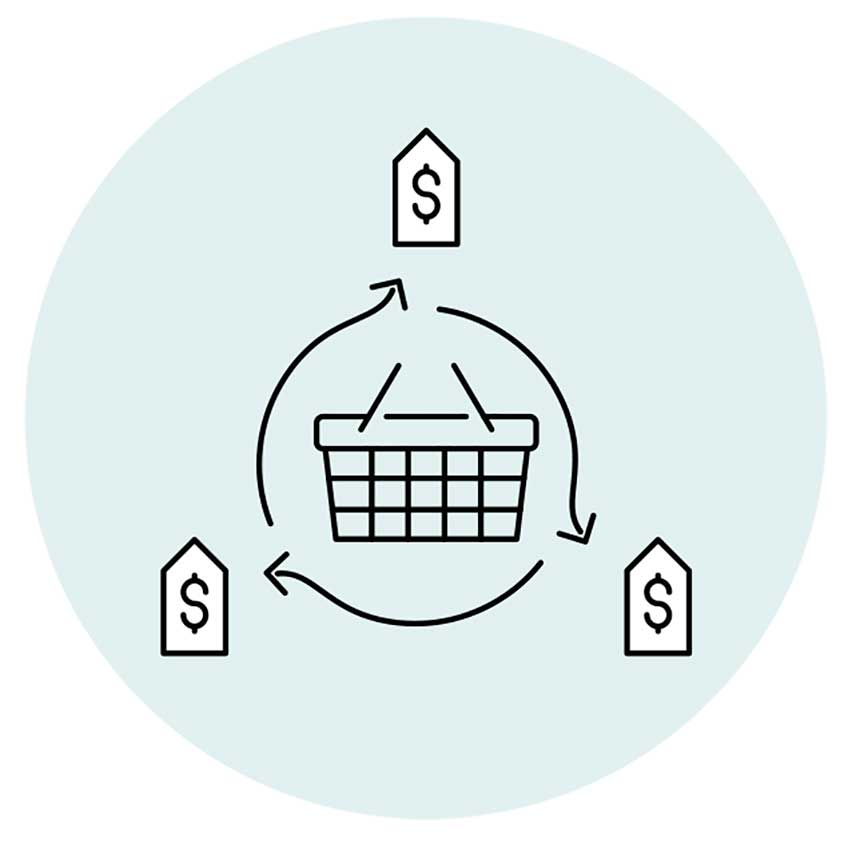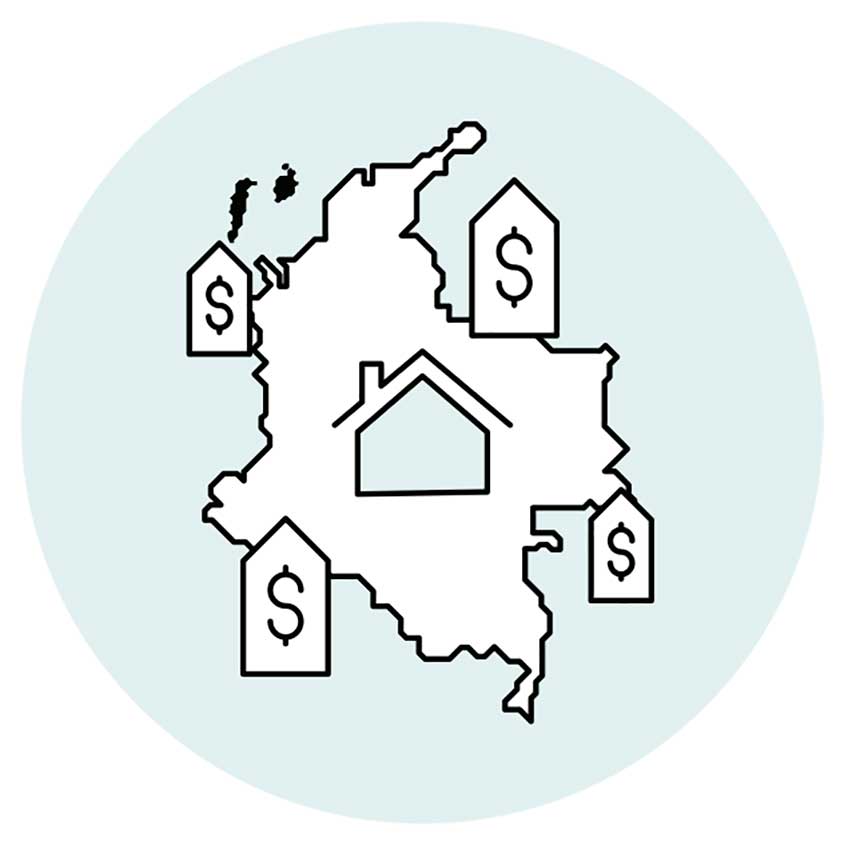Economic-knowledge: How much do you know about inflation?
Although this concept is known or familiar to some of us, the truth is that it is not for a high percentage of the population. Most people have a general idea of its meaning, but some interpretations could be far from reality.
Therefore, the objective of this and the following two Economic-knowledge publications is to address this economic concept simply, thus enriching our comprehension and easing the diffusion of information related to Banco de la República’s (the Central Bank of Colombia) main objective, which is to keep inflation low and stable

An introduction
| In order to address this explanation, the first thing we did was to ask three people with different profiles what they understand as consumer inflation. These were their answers: |
|---|
| “What I understand as inflation is when a product of the consumer basket, such as Papaya, Cassava, or Onion, increases its price. That is inflation!”. |
| “It is the indicator through which the prices of the family basket are measured.” |
| “It is the increase of the consumption values.” |
Although all these answers correspond to the same idea, their meaning could be slightly far from reality when taking them in detail and textually. Therefore, in this publication, we offer basic guidance on the inflation concept, dividing its definition by components and explaining them one by one. |
So, what is inflation?
A textbook or an expert on economic topics would provide us with the following definition:
Consumer inflation is the generalized and sustained increase in the prices of the country’s most representative goods and services of household consumption.
Although this definition seems simple, and in theory, we would think that it is easy to understand, perhaps at the end of the explanation we provide, you may realize that some concepts you did not know or were not clear, and you needed to strengthen them.
Based on the previous definition, we will explain each one of its components to fully understand this concept.

Consumer inflation is…
Although there are different measures of inflation, when we talk about this phenomenon, we refer to the one related to the prices consumers pay for their regular purchases (consumer inflation).

Increase…
We speak of increase specifically because it is the situation in which prices exhibit a positive variation, i.e., they are rising.
If the variation were negative or, in other words, the prices were decreasing on average, we would speak of a different phenomenon known as deflation..

The generalized…
We say the increase is generalized because we are measuring how much the prices of all the most representative goods and services increase on average for a Colombian consumer, and not the price of a particular item (such as potato) or just a single expenditure group (like food). For example, during a month, some prices of certain items could increase, while others decrease and others maintain the same; however, we call it inflation only when, on average, all these prices increase.

And sustained…
To be sustained indicates that the generalized increase in prices should be registered at least during the period carrying out the measurement (monthly in the Colombia case) and not by daily or temporal price changes.

In the prices…
Prices refer to the value we must pay as consumers when we buy articles that are used to satisfy our needs and desires.

Goods and services…
A Good refers, primarily, to the tangible elements (that I can touch and perceive) that we use to satisfy a need or wants, such as food, clothing, housewares, etc. On its part, Services include the intangibles that we also use to supply our needs and desires, such as health, a haircut or education, etc.

of the most representative …
Currently, the reference consumer basket1is composed of 443 different goods and services, and it intends to show what happens with the regular consumption of an average Colombian.
Precisely, the inflation measurement reflects the price behavior of the articles of such basket2.

Of household consumption in a country
As we said, the focus is on the prices the consumer faces and, therefore, it refers to the prices paid by a country’s households in their regular purchases.

To go deeper
| The entity responsible for the monthly calculation of Consumer Price Index (CPI) is the National Administrative Department of Statistics (DANE in Spanish), which is generally published to the public at night every fifth day of each month. |
This publication includes information on the variation in consumer prices that occurred in the country during the preceding month, for the year-to-date, and the last twelve months. To this end, more than 51,000 sources of information are consulted monthly in 38 cities of the country; they include supermarkets, real estate agencies, health institutions, educational centers, farmer's markets, and department stores, among others. |
| And to ease the measurement, all collected prices are thoughtfully grouped (depending on their importance for the expenditure of an average Colombian) in an indicator called Consumer Price Index (CPI), which allows following prices over time. Since CPI is a price index, while inflation is the change in the percentage of that index for a specific period, we can state that CPI is not the same as inflation. |
| Once the basic definition of inflation is understood, we can ask you to check the four initial answers, including yours, again so that you identify some inaccuracies they may have. Thus, when you are asked about inflation, undoubtedly, you will have total clarity on the concept. Even in the following Economic-knowledge editions, you will be able to understand simply the most common facts through which an economy could have inflationary phenomena and the importance of controlling it by the monetary authority for the benefit of the country’s inhabitants. |
_________
1 In this Basket, articles like food, beverages, clothing, leases, utilities, housewares, health, transport, information and communication services, leisure, culture, education, restaurants and hotels, and other goods and other various services are included. It is commonly thought that the products we buy at the supermarkets are the only one’s part of this basket, which is incomplete.
2 Although other products, including luxury cars, and diamond rings, among others, are consumed, they are not part of the basket and are not included in the measurement of inflation since they are not representative of the regular expenditure of a country’s inhabitants.

































































